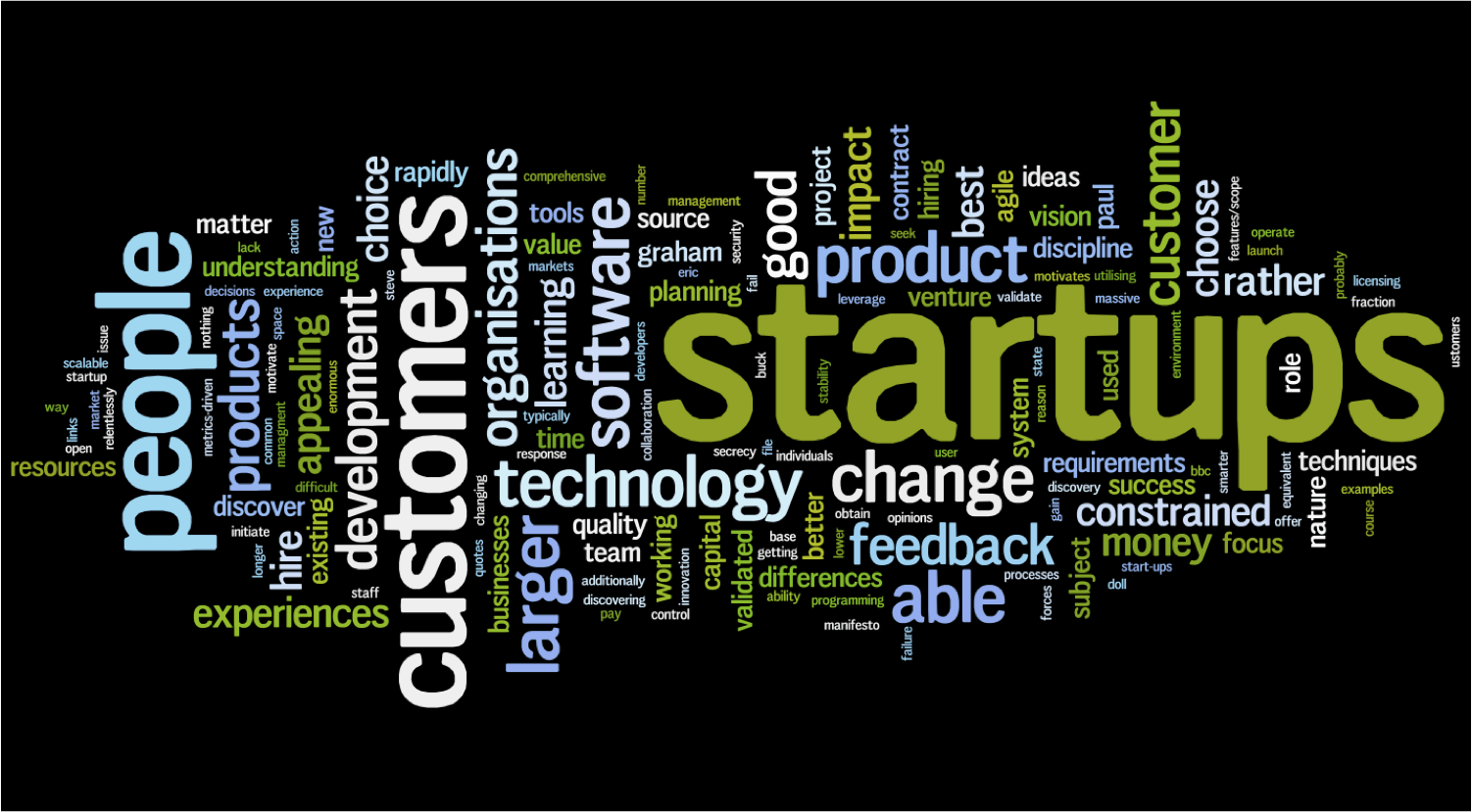Here at SWARM we work with a lot of startups. It’s the world we came from, one where we understand product idiosyncrasies and company needs. Relying on both data and experience, we are able to deliver strategy, design, and marketing solutions quickly and efficiently. Sometimes, working with these startups is a complete breeze – the company provides us with fundamental marketing, we have a comprehensive chat – everyone is on the same base, and we can easily get to work.
Yet other times, we run into companies who as I like to call it, have a misunderstanding of self, or an identity crisis, if you will. They don’t know what their mission is, what their long term vision is, they lack their base marketing fundamentals. Hopefully this post will help remedy that. The world of startup product marketing can be a confusing one. Reasons being two fold:
- If you don’t understand your product or market – you’re going to fail.
- When working with anyone externally, designers, marketing consultants, agencies, or building partnerships, you’ll need to communicate your base marketing fundamentals to expedite collaborative processes.
Identify yourself and your core product.
While this may seem obvious, the exercise hones in at the center of your product. This is who you are. Period. For us, this would be the following “We are design and strategy producers.” A lot can go under this umbrella, market strategy, brand and identity consulting, product design for web, tablet, mobile & wearable, advertising campaign ideation, etc… but at the core of it all, we are design and strategy producers.
This is the what. Next ask yourself – does anyone actually need this? You may be inclined to say “yes” immediately, but think about it. Does it solve a pain point? Will it help accomplish XYZ in a manner that is easier? If the answer is yes then write out why. “Design and strategy are synonymous to the creation of product, yet businesses will often look to either with the hope it can independently solve product issues – however one is dependent on the other, and by combining both we help businesses design product that is effective, results driven and modern” Who buys our service? At the highest level – Businesses.
Now that you’ve identified, 1. What you are and 2. Who needs you, you can move on to third step. 3. How you deliver this value. “We deliver strategy and design by executing deliverables”. If you’ve gotten to this point. Congratulate yourself. You’ve just defined your Market of Reference.
Define the competitive landscape
What makes your business unique is a differentiator. Something that separates you from the competition. But to know what the competition is doing you first have to identify who the competition is. You want to define as many companies as you can.As an example, for us let’s say that these are ideo.com and frogdesign.comWhile defining the competitive landscape you’ll also want to list the value that each product brings to the consumer, or in layman’s terms “Why do people buy / use their products / services.
Organize your Marketing thinking
We now take what we’ve started to come up with and start putting it into a framework. We now define the mission, vision, brand, audience, niche and the core message.In order to do this, I’ve referenced my friend Cezary’s blog, where he goes into detail on the semantic aspects of developing each one of these elements and then provides a simple to use and understand canvas.
Mission: the Company’s reason to exist. Vision: The company’s long-term, aspirational business goalsBrand: A promise the company makes to its customers Target audience: The customers (existing + ideal) the company serves Market niche: The company’s market position relative to competition Key message: The one idea the company conveys to its audience
Conduct an internal assessment
Once we understand the way the world sees our brand – we then have to look introspectively at ourselves as a company and further hone in on those areas that make us shine. A good way of doing this is to take a SWOT analysis. For those unfamiliar, SWOT stands for Strengths, Weaknesses, Opportunities and Threats.
It’s important that when starting a SWOT you don’t focus on the company as a whole, but only the service offering. For example – by saying that one of SWARM’s weaknesses is that we as a company have been operational less than a year would be incorrect in the context of our product offering, or even on the company level. We should instead say that one of SWARM’s weaknesses is that a paired work model and the coupling of design and strategy may be seen by managers as unnecessary and that education will be needed to convey the message. And if conducing a SWOT on the basis of the company, the same weakness should look at the underlying cause.
SWARM’s weakness isn’t that it’s been around for less than a year, our weakness is that because we’ve been around less than a year, we lack considerable brand name recognition. Conducting a product SWOT is important for a number of reasons. It indicates to you what you’re doing well, what you should focus on changing and how to think about the future – and specifically when thinking of product it identifies its STRENGTHS, which we then apply to presentation, copy and build our marketing plan around.
Identify your target audience’s value drivers
This assumes you’ve gone through and made a list of your competitors, defined competitive product, its strengths, weaknesses, and customer value drivers. Now it’s time to do the same to your product.Remember, these are NOT company specific divers such as your EBITDA, sales growth, gross margin, etc. Here we continue to think about the value(s) your potential customers derive from your product. We do this by using the equation.
Value = Benefits / Costs
But what does that mean? We can quantitatively define the benefit of a product by attributing its benefit to a monetary value. Say the benefit of a widget provides you with 10 hours worth of time that you would have spend working without using the widget, and you bill 100 per hour. The benefit of having the widget is then 10 hr x $100 = $1000.
No lets say that the widget cost you $50. The quantitative value of the widget would then be 20 which = 1000/50. Now as long as the number is greater than 1 the product will contribute value. Qualitatively, we can translate the same thing into the following. The widget will save customers 10 hours when they use it, it saves them this time by facilitating Y and integrating with Z. So our qualitative benefits are Y and Z.This exercise helps us understand the specific value that we offer – allowing us now to integrate product benefits into our presentation, copy, and to start thinking how we communicate them with our potential customer base, and how they differ from the benefits our competitors offer.
This is all step one. This is at its core, the basic way you should think about your marketing efforts. Without this, any marketing plan will fall to pieces and you’ll have wasted valuable time and money – both of which are scarce for new companies. If you’d like help on startup product marketing, we’re here.




